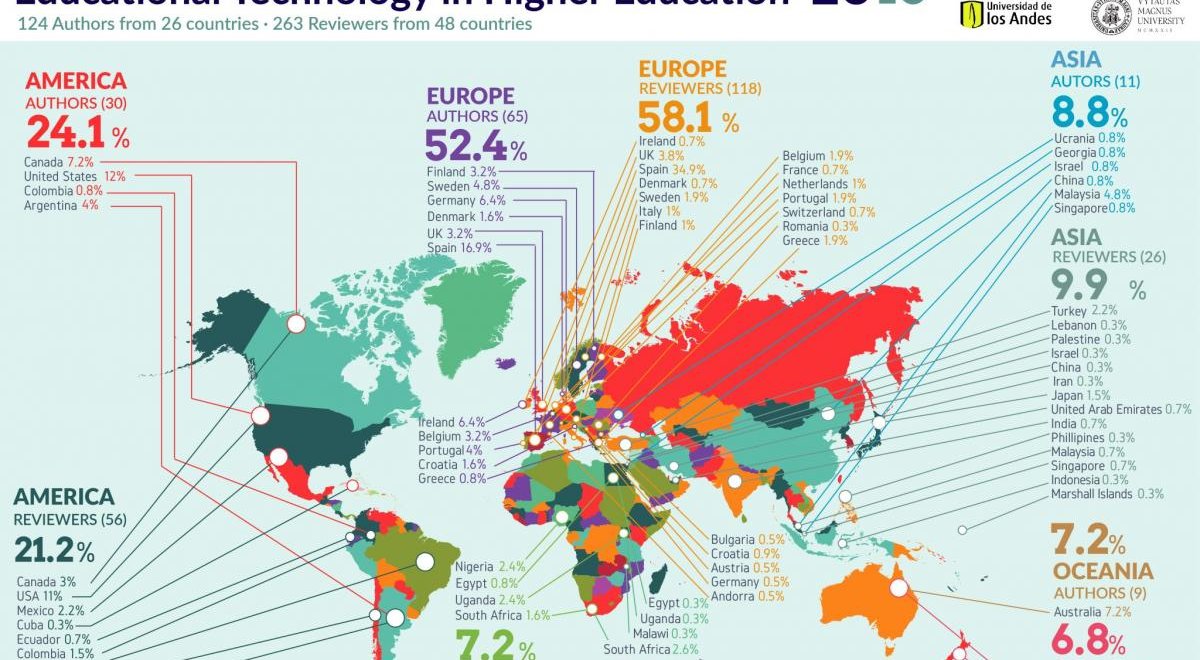ETHE achieves its first journal impact factor (JIF)
Subject: Multidisciplinary
This index will enhance ETHE's visibility and position it among the most renowned journals in the field of e-learning in higher education.
A painstaking selection of contents, a global academic network and numerous actions to disseminate the published articles; these are some of the ingredients that have made the International Journal of Educational Technology in Higher Education (ETHE) one of the best positioned journals on e-learning in higher education.
This is confirmed by the achievement of its first journal impact factor (JIF) of 1,922. "This recognition reflects the quality of the work that the whole editorial board has been doing for many years", noted Josep M. Duart, editor-in-chief of ETHE.
An international benchmark in e-learning
Last October, the journal was selected for inclusion in the Journal Citations Reports (JCR), and specifically in the Social Sciences Citation Index (SSCI), a major database among international scientific publications.
This also involved the calculation of the impact factor, an indicator based on citations received that enables the journal to compare itself with other publications in its discipline and assess its influence.
In the category of EDUCATION & EDUCATIONAL RESEARCH, ETHE is ranked in quartile 2 (Q2), in 75th position out of the 243 indexed journals. "These results are very positive and quite unusual for a publication entering the international SSCI for the first time," Duart pointed out.
If within the JCR category of EDUCATION & EDUCATIONAL RESEARCH we only consider titles with the same thematic focus as ETHE (e-learning in higher education), the journal comes in 8th in Educational Technology and 12th in Higher Education.
Here are 23 #highered journals with 2018 Journal Impact Factors in #webofscience. #1 Research Policy and #2 Internet & Higher Ed stand out, most increased rank vs full 12,500 list. 5 of 23 Australian editors (Higher Ed; Studies in HE; Teaching in HE; @HERDjournal #JHEPM) pic.twitter.com/h2OaN8y3tZ
— Peter Bentley (@DrPeterBentley) 21 de junio de 2019
"For a scientific journal, achieving the JIF means maximum visibility in the academic world, receiving more articles and ensuring the publication of high quality contents", explained the managing editor of ETHE, Elsa Corominas.
However, greater visibility also brings a new challenge: maintaining the quality level, "not only in the contents published but also in editorial management and time spent editing and with authors, editors and reviewers", Corominas added.
The impact factor
The impact factor is an index that indicates the visibility of academic journals in the scientific world. It is calculated by correlating the citations received by a journal and the number of articles published during a given period of time.
This index is an indicator of a journal's influence in its field of research. The measurement was originally used as a tool to aid library collections managers when deciding on subscribing to a new publication.
The San Francisco Declaration on Research Assessment (DORA), of which the UOC and SpringerOpen (the platform where the ETHE is published) are signatories, promotes a change in the research assessment model, where journals' assessment is not based exclusively on the JIF but also on other aspects that represent individual articles themselves.
The ETHE journal in figures
In the last year, ETHE has quadrupled the number of joint editors-in-chief. Two more universities now jointly publish the journal: apart from the University of los Andes in Colombia, participants now include Ireland's Dublin City University and Lithuania's Vytautas Magnus University.
The editorial board comprises Josep M. Duart, as editor-in-chief, as well as Alvaro Galvis (University of los Andes), Mairead Nil Giolla (Dublin City University) and Airina Volungeviciene (Vytautas Magnus University). The managing editor of the journal is Elsa Corominas.



